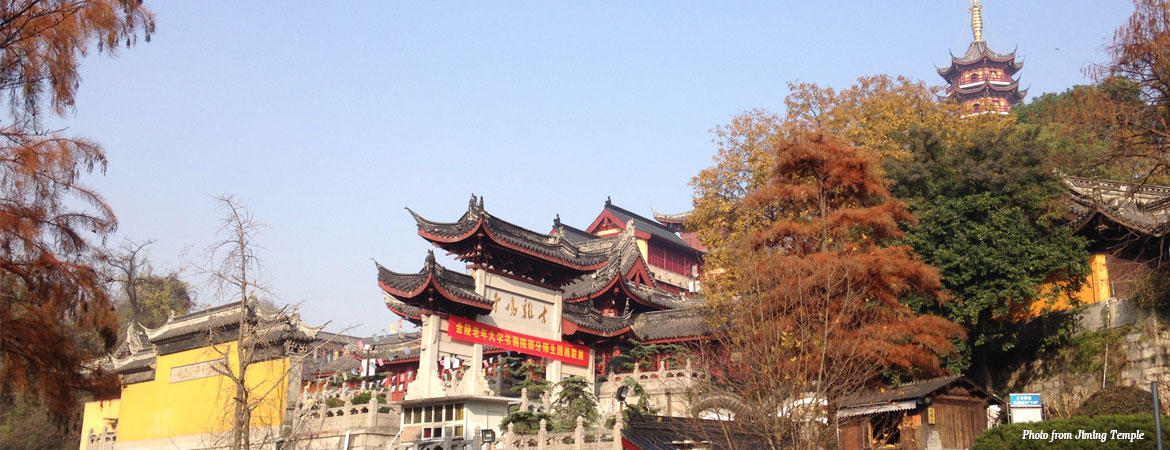Jiming Temple
Jiming Temple (Cock-crow Temple) is located on a hill in the northeast part of the city. It is an extraordinary location, and each edifice is built successively higher on the hill, as if the temple itself were climbing toward the sky. Most of the buildings are bright yellow, with dark red trim and beautiful tile roofs. The view east looks past the city wall and across Xuanwu Lake to the foothills of Purple Mountain.
The temple was founded at the beginning of the Jin dynasty, though most of the buildings now in use were built by the Ming. During the Liang dynasty (502-556 A.D.) it was known as the Tongtai Temple; in the year 527, the first Liang emperor sequestered himself here, and refused to return to the throne until his own government had paid a sizable "ransom." This happened a total of four times here and elsewhere, and was either simply a means of subsidizing his favorite monasteries, or a desperate gesture that he hoped would lead Heaven to cease tormenting his reign with natural and other disasters.
With Xuanwu Lake at the back, Jiming Temple faces the Purple Mountain to the east. Inside the temple are Guanyin Building, Huomeng Building, Jingyang Building, Rouge Well, etc. Legend has it that when the emperor of the Southern Tang Dynasty and his concubine hid themselves in the well in order to escape the enemy pursuit, the stains of rouge were left on the well: hence the name of Rouge Well. Behind the temple there remains a section of palace wall called Taicheng.
Jiming itself was the most important temple in Nanjing throughout the ensuing Southern Dynasties period, which is saying a great deal, as by then there were some four hundred eighty temples in the area. Under the Southern Tang it was renamed Jing Ju, and then Yuan Ji. The Song called it Fabao Temple, and its current name was finally bestowed in the year 1387, a gift from Ming emperor Hongwu.
Near the middle of the hill is the Buddha Mercy Hall, with its statue of the 1000-hand Buddha. Still lower is the Bhaisajyaguru Pagoda; recently rebuilt, it stands nearly forty-five meters high, with a bucket arch and several layers of eaves. Bhaisajyaguru translates as Buddha of Medicine or Healing Buddha, and on the ground floor there is a Ming-era bronze image of him which rises seven meters high. On the second floor there are four smaller gold images of him in hand-carved niches, also from the Ming.

